Ditapis dengan
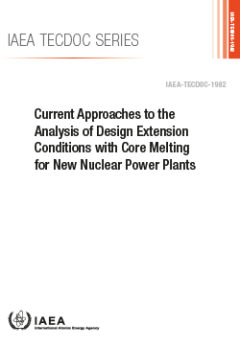
Current Approaches to the Analysis of Design Extension Conditions with Core M…
The requirement of deriving design extension conditions (DEC), which are understood to comprise both conditions in events without significant fuel degradation and conditions in events with core melting, were introduced in IAEA Safety Standards Series No. SSR-2/1 (Rev. 1), Safety of Nuclear Power Plants: Design [1]. In SSR-2/1 (Rev. 1) [1], DEC were introduced for the purpose of further improvin…
- Edisi
- -
- ISBN/ISSN
- 978-92-0-133921-8
- Deskripsi Fisik
- 168 Hal
- Judul Seri
- -
- No. Panggil
- -
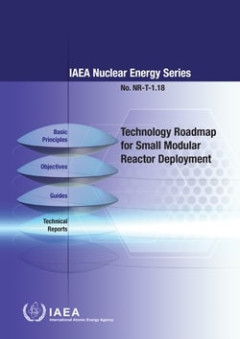
Technology Roadmap for Small Modular Reactor Deployment: IAEA Nuclear Energy …
Given the increasing interest of Member States in the near term deployment of SMRs, this publication presents several model technology roadmaps that States can adapt for their specific projects. For nuclear newcomer countries, these roadmaps assume that a Member State has already developed, or is at least well along the way to developing, the infrastructure necessary to carry out a nuclear powe…
- Edisi
- 2021
- ISBN/ISSN
- 978-92-0-110121-1
- Deskripsi Fisik
- 124 p
- Judul Seri
- -
- No. Panggil
- 621.039.5 IAE t

Safety Reports Series No. 30: Accident Analysis for Nuclear Power Plants with…
The objective of this publication is to provide specific guidance for accident analysis for nuclear power plants with pressurized water reactors, taking into account the specific design features of these reactors. This guidance covers all steps required to perform such analyses, including selection of initiating events, acceptance criteria, computer codes, modelling assumptions, preparation of …
- Edisi
- -
- ISBN/ISSN
- 92-0-110603-3 / 1020-6450
- Deskripsi Fisik
- 65 p. : Illus. ; 24 cm
- Judul Seri
- Safety Reports Series
- No. Panggil
- -

Technical Reports Series No. 369: Management for Excellence in Nuclear Power …
The objective of this report is to facilitate a recognition of priority management issues which, when not adequately recognized and addressed, can result in problems in operational performance at nuclear power plants. It provides a number of effective practices, reflecting the positive experience of nuclear power companies, that have prevented or corrected problems related to selected managemen…
- Edisi
- -
- ISBN/ISSN
- 92-0-103194-7/0074-1914
- Deskripsi Fisik
- -
- Judul Seri
- -
- No. Panggil
- -
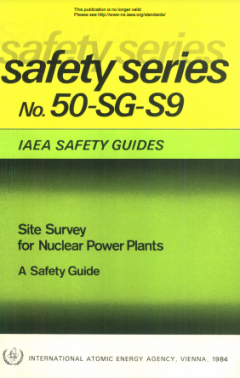
Safety Series No. 50–SG–S9: Site Survey for Nuclear Power Plants, A Safet…
This Guide describes the first stage of the siting process for nuclear power plants — the site survey, which involves the study and investigation of a large region to select one or more preferred candidate sites. Its purpose is to recommend procedures and provide information for use in implementing a part of the Code of Practice on Safety in Nuclear Power Plant Siting (IAEA Safety Series No. …
- Edisi
- -
- ISBN/ISSN
- 92-0-123884-3
- Deskripsi Fisik
- 48 p. : Illus. ; 24 cm
- Judul Seri
- Safety Guides
- No. Panggil
- 629.135 IAE s
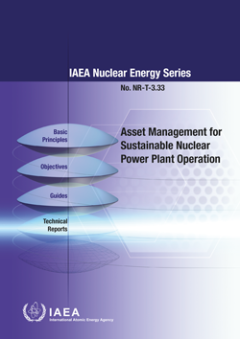
Asset Management for Sustainable Nuclear Power Plant Operation - IAEA Nuclear…
Asset management plays an important role in maintaining the competitiveness of nuclear power plants in a challenging and changing electricity market. The value of effective asset management is in providing support to those making decisions seeking the optimum level of financial performance, operational performance and risk exposure. This publication provides information on various methodologies…
- Edisi
- -
- ISBN/ISSN
- 978-92-0-126720-7
- Deskripsi Fisik
- 83 hal
- Judul Seri
- -
- No. Panggil
- -
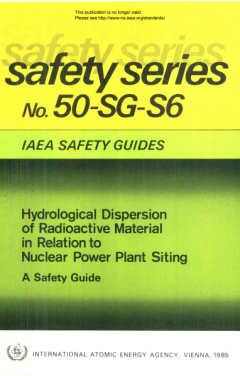
Safety Series No.50-S6-D2 (Rev. 1) SAFETY GUIDES. Fire Protection in Nuclear …
The hydrosphere represents an important pathway by which radioactive materials caft be dispersed from a nuclear power plant into the environment and hence to man. The dispersion in surface water is discussed in this Guide while the question of dispersion in groundwater is presented in the Safety Guide on Nuclear Power Plant Siting: Hydrogeologic Aspects (IAEA Safety Series No.50-SG-S7).
- Edisi
- -
- ISBN/ISSN
- 9 2-0-123285-3
- Deskripsi Fisik
- 132 pages
- Judul Seri
- -
- No. Panggil
- -
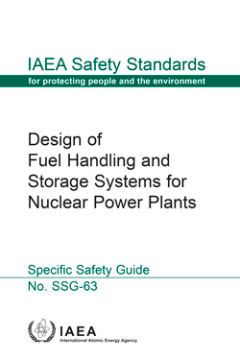
Design of Fuel Handling and Storage Systems for Nuclear Power Plants - IAEA S…
This Safety Guide provides recommendations on how to meet the requirements of IAEA Safety Standards Series No. SSR-2/1 (Rev. 1), Safety of Nuclear Power Plants: Design, in relation to fuel handling and storage systems. The publication addresses the design aspects of handling and storage systems for fuel that remain part of the operational activities of a nuclear reactor. It covers the following…
- Edisi
- -
- ISBN/ISSN
- 978-92-0-108519-1
- Deskripsi Fisik
- 53 pages, 134 MB
- Judul Seri
- -
- No. Panggil
- -
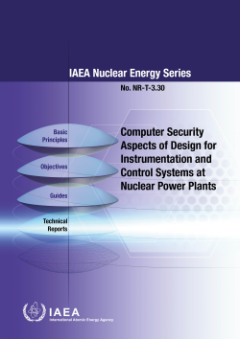
Computer Security Aspects of Design for Instrumentation and Control Systems a…
The transition to digital technology has changed the nature of instrumentation and control (l&C) systems by enabling extensive interconnection of reprogrammable, functionally interdependent I&C systems. This development has made computer security a necessary element for consideration in I&C system design. The benefits and challenges of the various computer security methods and controls with the…
- Edisi
- -
- ISBN/ISSN
- 978-92-0-104919-3
- Deskripsi Fisik
- 57 Pages
- Judul Seri
- -
- No. Panggil
- -
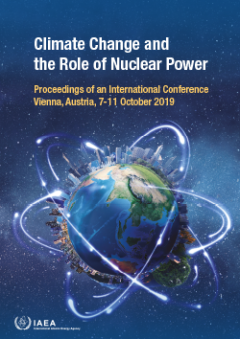
Climate Change and the Role of Nuclear Power - Proceedings of an Internationa…
To address the challenges posed by climate change, and to achieve the goals established in the 2015 Paris Agreement, nuclear power has been identified to have great potential to contribute to the 1.5°C climate change mitigation target. This topical conference on climate change and the role of nuclear power, the first of its kind, served as a unique forum for exchanging science-based informatio…
- Edisi
- -
- ISBN/ISSN
- 978-92-0-120120-1
- Deskripsi Fisik
- 218 Hal
- Judul Seri
- -
- No. Panggil
- -
 Karya Umum
Karya Umum  Filsafat
Filsafat  Agama
Agama  Ilmu-ilmu Sosial
Ilmu-ilmu Sosial  Bahasa
Bahasa  Ilmu-ilmu Murni
Ilmu-ilmu Murni  Ilmu-ilmu Terapan
Ilmu-ilmu Terapan  Kesenian, Hiburan, dan Olahraga
Kesenian, Hiburan, dan Olahraga  Kesusastraan
Kesusastraan  Geografi dan Sejarah
Geografi dan Sejarah